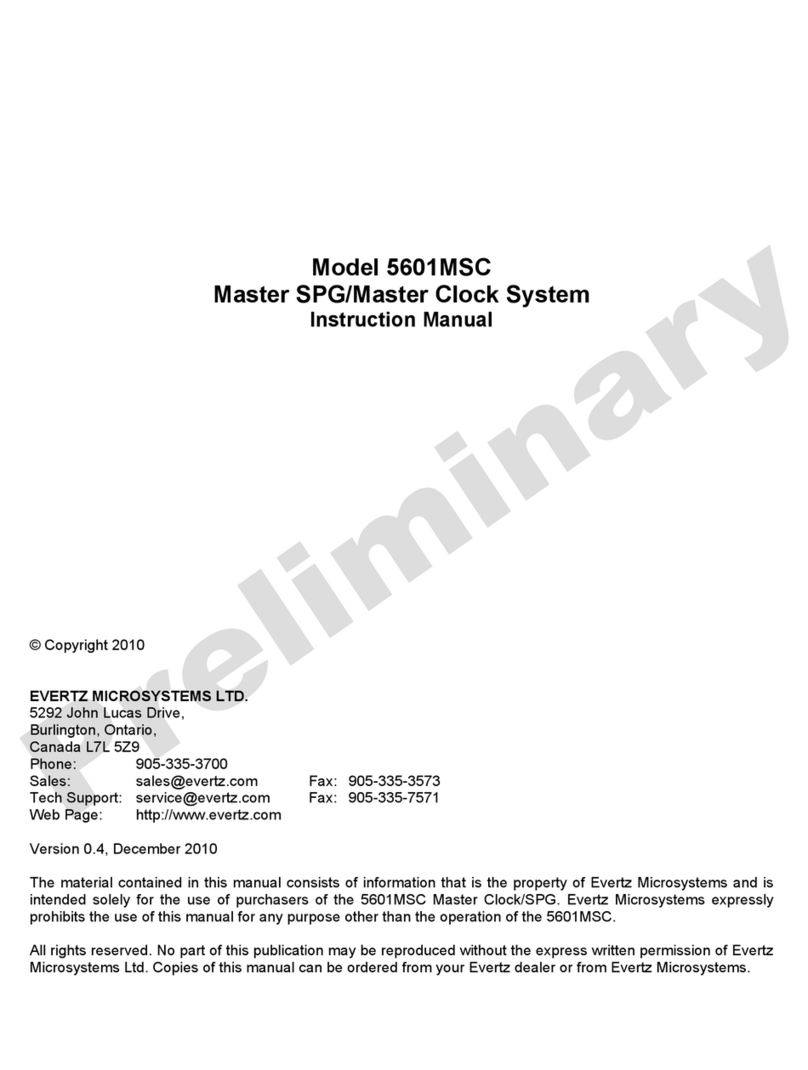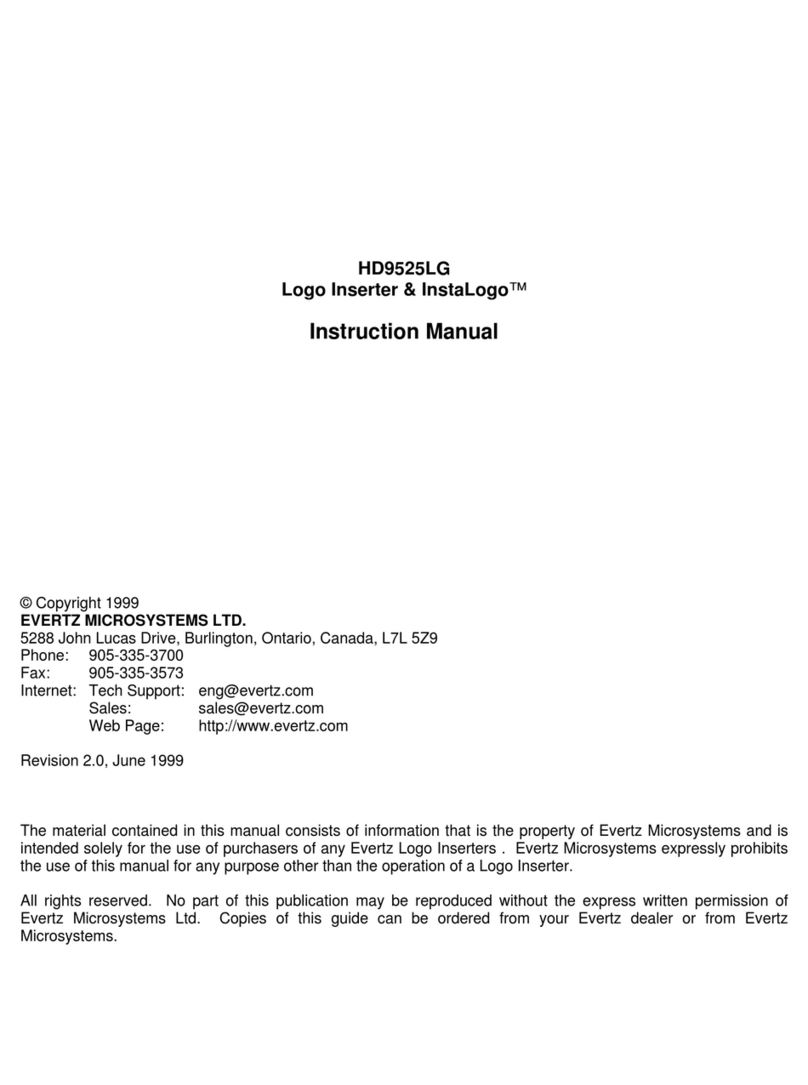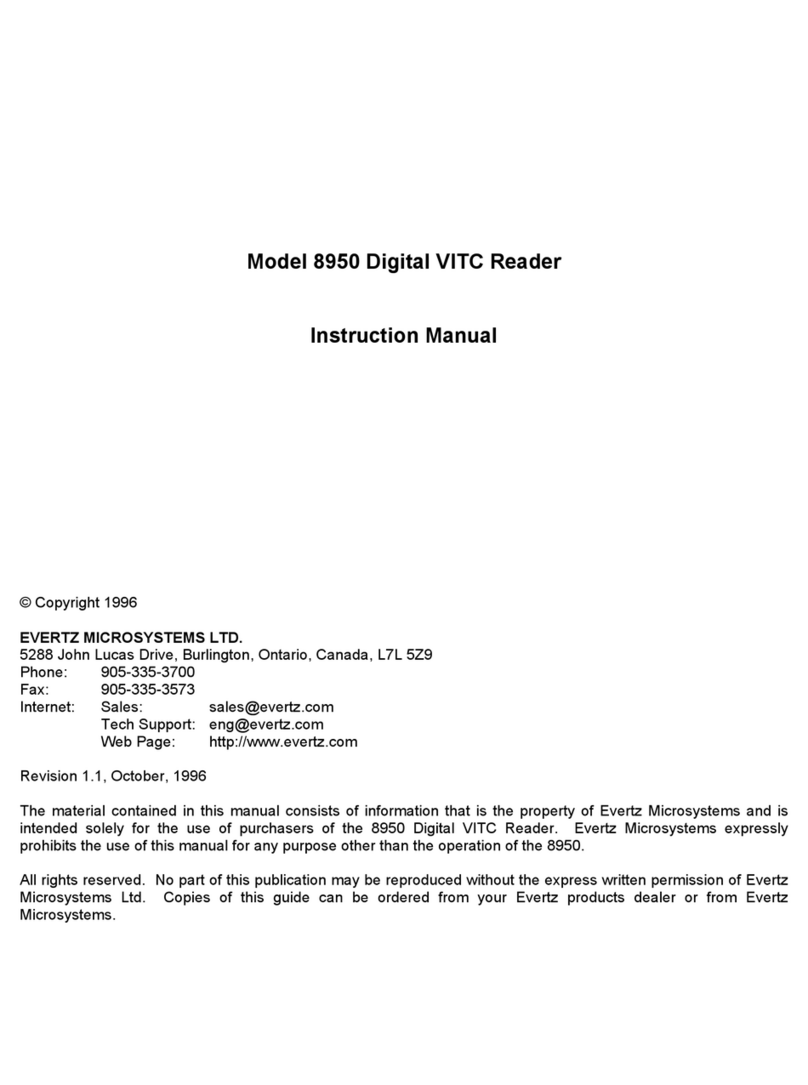evertz X-9504 User manual
Other evertz Network Hardware manuals
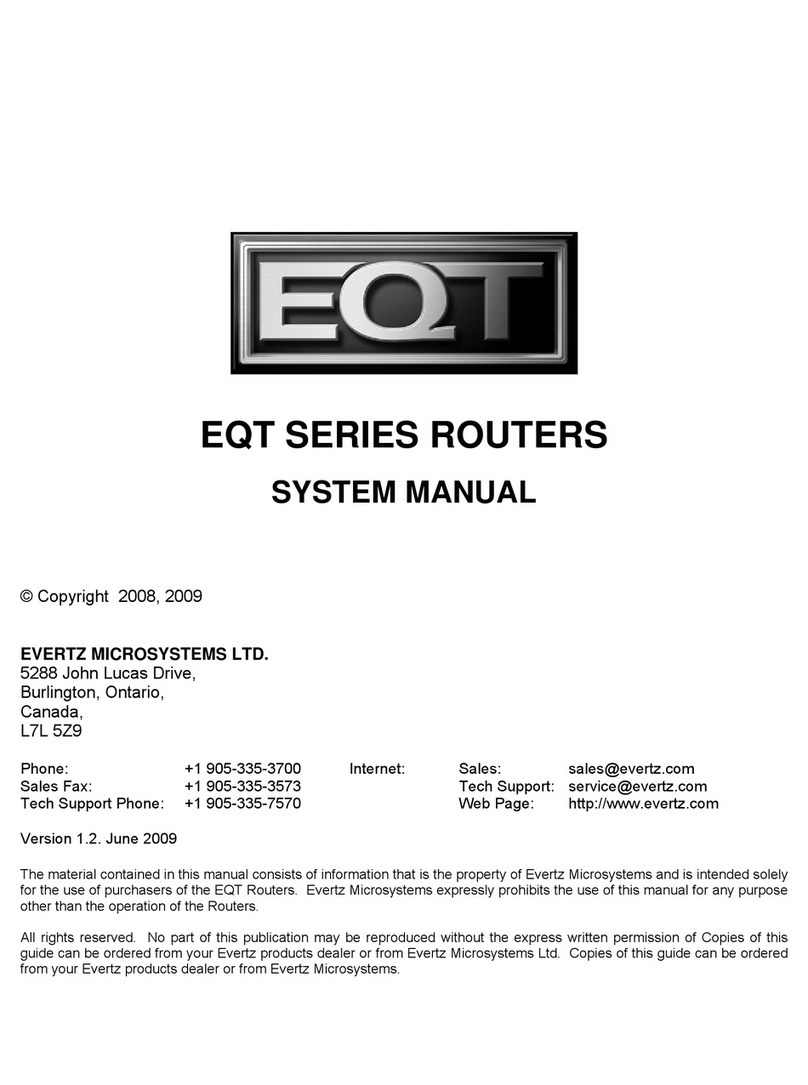
evertz
evertz EQT Series User guide

evertz
evertz 9531 User manual

evertz
evertz 7700 Series User manual
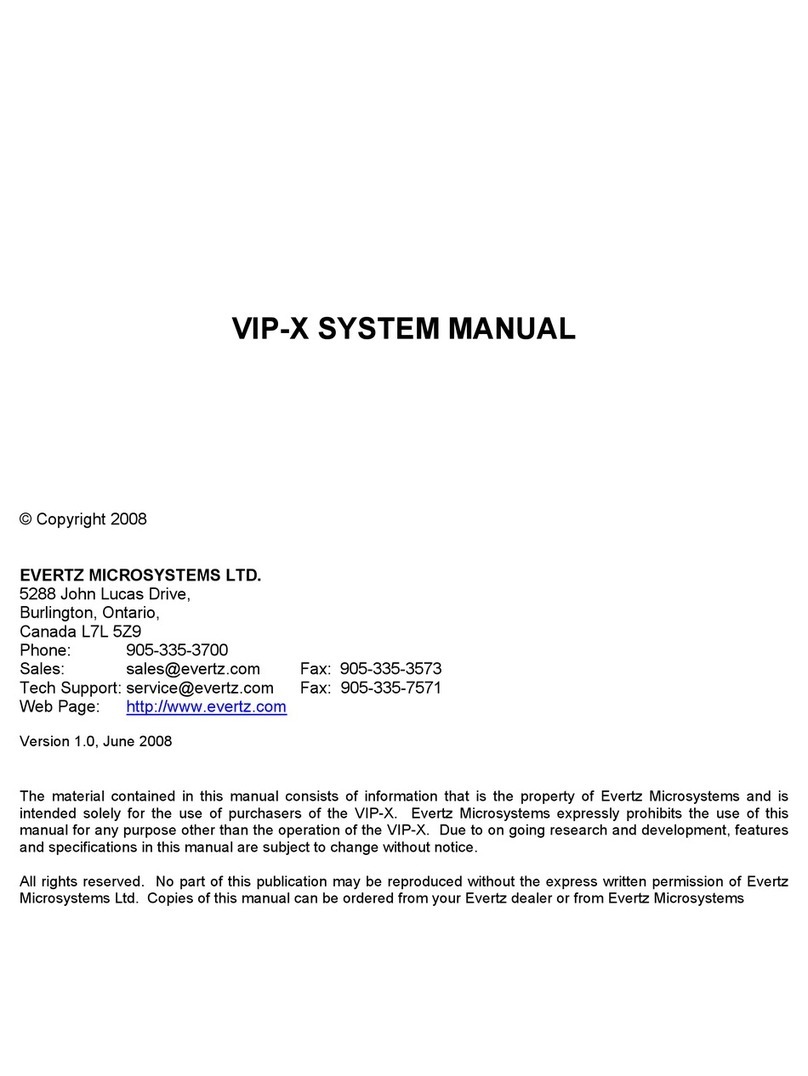
evertz
evertz VIP-X User guide

evertz
evertz 7700 Series User manual

evertz
evertz 7700 Series User manual

evertz
evertz 8025 User manual

evertz
evertz 7720AE Series User manual

evertz
evertz TR-3200E User manual

evertz
evertz MAGNUM-ROUTER-SS User manual
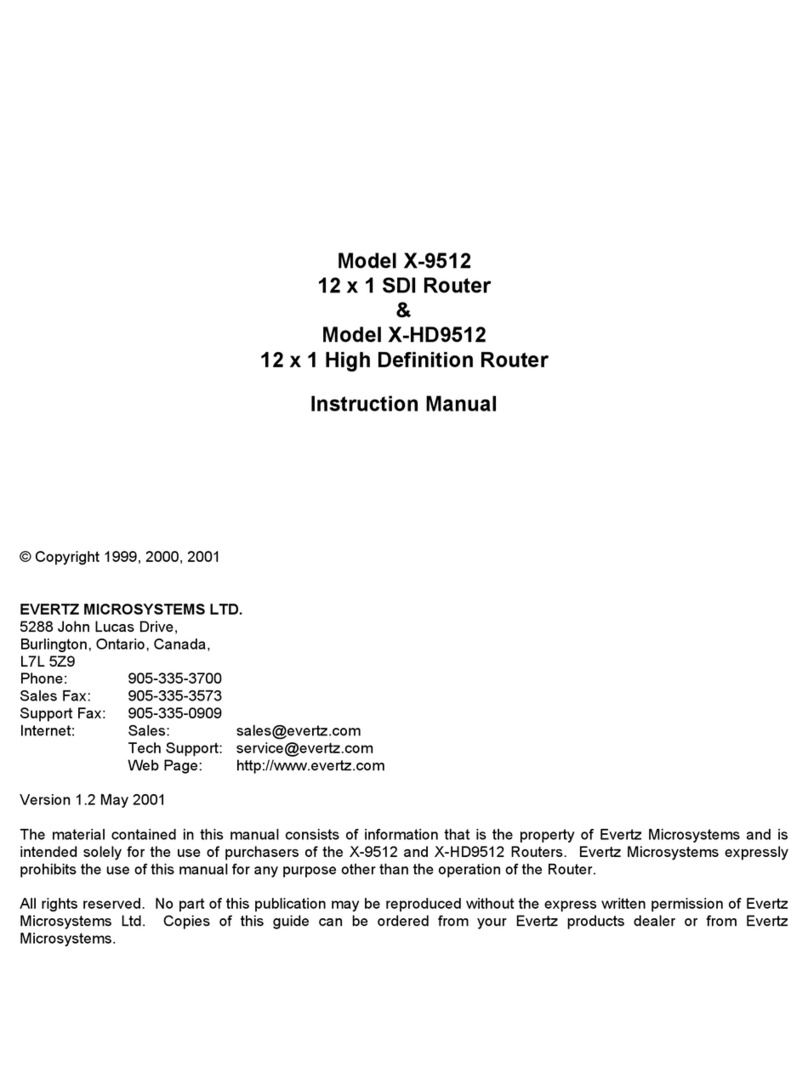
evertz
evertz X-9512 User manual

evertz
evertz 5700ACO User manual

evertz
evertz 7700 Series User manual

evertz
evertz 7700 Series User manual

evertz
evertz 7700 Series User manual

evertz
evertz 9625DSK-LGA User manual

evertz
evertz 7700 Series User manual

evertz
evertz 9725LG User manual

evertz
evertz 7700 Series User manual

evertz
evertz 2400ODU User manual
Popular Network Hardware manuals by other brands

Matrix Switch Corporation
Matrix Switch Corporation MSC-HD161DEL product manual

B&B Electronics
B&B Electronics ZXT9-IO-222R2 product manual

Yudor
Yudor YDS-16 user manual

D-Link
D-Link ShareCenter DNS-320L datasheet

Samsung
Samsung ES1642dc Hardware user manual

Honeywell Home
Honeywell Home LTEM-PV Installation and setup guide
